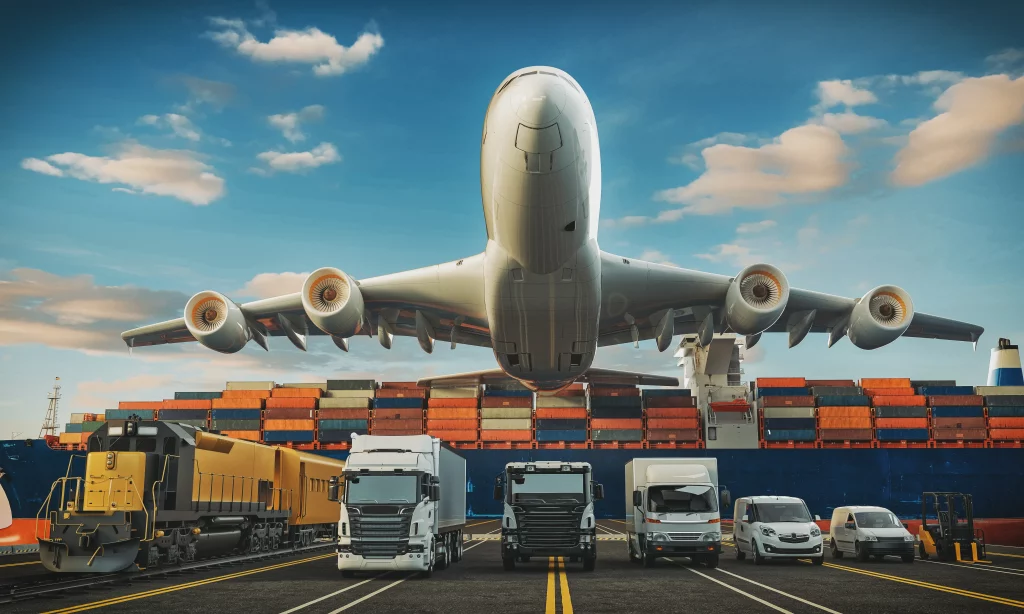In the fast-evolving world of modern commerce, businesses, particularly eCommerce enterprises, often find themselves navigating the complex landscape of expenses associated with order fulfillment.
Choosing to partner with Third-Party Logistics (3PL) companies has become a strategic approach to streamline operations.
To make informed decisions about logistics needs, understanding the cost components and evaluating the balance between fees and benefits is pivotal.
In this comprehensive guide, we will delve into the specific components of 3PL expenses, various pricing models, and how to calculate fulfillment costs per order, with a vision to assist eCommerce businesses in making informed decisions regarding their logistics needs.

Breaking Down 3PL Expenses
For eCommerce businesses seeking to assess the value of 3PL services, it’s paramount to comprehend the four main categories of fees that comprise the total expense:
1. Receipt of Your Inventory
3PL companies receive and manage your incoming stock, ensuring it’s seamlessly integrated into their warehouse. The cost of this service varies based on several factors, including order volume and any specialized requirements, such as handling oversized or temperature-sensitive items.
2. Warehouse and Storage
Storing your inventory is a pivotal aspect of 3PL services. The cost of warehousing depends on elements like your product’s size, weight, and the amount of space it occupies.
3. Picking and Packing
This phase includes selecting items from the warehouse and packaging them for shipment. The cost of pick and pack services can vary, often encompassing both labor and packaging materials.
4. Outbound Shipping Expenses
This category includes the cost of shipping your orders to customers. The specifics depend on factors like the shipping method, carrier, and the dimensions and weight of the products.
Evaluating 3PL Fees
The determination of whether 3PL fees are worth the benefits hinges on a careful assessment of the individual components and pricing models.
1. Order Fulfillment Fees
The cornerstone of 3PL services, order fulfillment fees cover services such as receiving inventory, storing products, processing orders, picking, packing, and managing returns. The exact costs may vary depending on factors like the 3PL provider’s pricing model, order volume, and any additional services your business requires.
2. Cost Per Order
Typically, standard pick and pack fees start around $0.20 per item. However, several factors come into play in calculating the ultimate cost per order, making it essential to consider order fulfillment expenses and fees as a whole.

3PL Pricing Models
3PL providers offer various pricing models, with different structures to accommodate diverse business needs. These models include:
1. Flat Rate Pricing
A flat-rate plan charges per order, by shipment, or on a monthly basis. It often includes multiple services such as storage, fulfillment, kitting, shipping, customer service, and returns.
2. Pricing by Kit
For inventory that requires assembly before shipping, a separate fee may be charged based on the complexity of the assembly.
3. Pricing per Bin, Shelf, or Pallet
Storing inventory by the pallet is typically the most cost-effective option, while other variations, like pricing per cubic foot or per storage bin, cater to specific needs.
4. Pricing on a Project Basis
Some 3PLs work on a project-by-project basis, particularly with organizations executing crowdfunding campaigns or time-limited initiatives.
5. Pass-Through Pricing
This model involves passing wholesale rates to customers, with added discount rates and transaction fees.
Typical 3PL Service Fees
Most logistics companies levy fees for services such as storage and picking, with the costs varying based on factors like the chosen 3PL, warehouse size, order volume, product characteristics, and additional services required.
Estimating Costs
While precise cost estimates depend on your eCommerce business’s unique needs, some ballpark figures may provide a starting point:
- Onboarding: Typically, onboarding fees range from $100 for small eCommerce businesses to several thousand dollars for larger, complex enterprises. This covers integration, infrastructure setup, and staff training.
- Set-Up: Set-up fees, generally ranging from $100 to $1000, are one-time payments based on the complexity of your business and the size of your eCommerce company.
- Inbound Shipping and Receiving: Fees for handling incoming inventory may be charged by the hour or per unit, with rates between $20 and $50 per hour or $5 to $15 per pallet, or $0.25 per item.
- Storage and Warehousing: Costs for storing inventory are typically determined by the space required and can vary based on the 3PL’s pricing structure.
- Box and Packaging: While often included in the order fulfillment fee, special packaging may incur an additional cost of $0.25 to $2.00 per shipment.
- Pick and Pack: This fee encompasses the picking and packing process, as well as standard shipping materials, with average costs typically below $3 for B2C merchants and around $3.75 for B2B customers.
- Label Printing and Order Inserts: Additional charges may apply, ranging from $0.10 per shipment.
- Shipping Charges: Shipping costs are influenced by the size and weight of products, and businesses can choose to use their own carrier account or the 3PL’s, each offering distinct advantages.
- Work Orders: These hourly charges cover miscellaneous tasks and vary based on the duration of the activity.
- Returns: Handling customer returns may involve return shipping charges and processing fees, typically between $1 and $3.50.
- Account Management: A monthly flat fee or hourly rate may be applied for services beyond order fulfillment, such as customer service and supply chain management.
Calculating Fulfillment Cost Per Order
To estimate your approximate fulfillment cost per order, you can use the following formula:
| Cost Component | Calculation |
| Total Warehouse Storage Fee | Number of pallets x storage fee per pallet |
| Total Pick & Pack Fee | (Number of orders per month x Pick & Pack fee per order) + (Number of units per month x Pick & Pack fee per unit) |
| Total Receiving Fee | Number of units received every month x receiving fee per unit |
| Total Monthly Fee | Total Warehouse Storage Fee + Total Pick & Pack Fee + Total Receiving Fee |
| TOTAL Fee Per Order | Total Monthly Fee ÷ Number of Orders Per Month |
Final Considerations
In the eCommerce sector, businesses aiming to scale and improve customer service often opt for 3PL solutions.However, the intricate interplay of inventory, size, complexity, and order volume necessitates a tailored assessment.
Ultimately, the decision to partner with a 3PL and the associated costs will depend on a detailed discussion of your eCommerce business’s unique needs and the offerings of potential 3PL partners.
In conclusion, while costs are an essential aspect of the equation, the value offered by 3PL services can significantly enhance your eCommerce operations, ultimately optimizing your customer experience and bottom line.